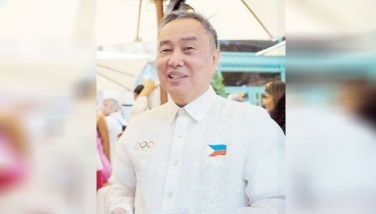Camp John Hay marks centenary
October 31, 2003 | 12:00am
BAGUIO CITY — Camp John Hay marked its centenary on Oct. 25, ending celebratory activities begun since July.
Now managed by the Camp John Hay Development Corporation and the John Hay Management Corporation, the the former US rest and recreation facility was created by then US President Theodore Roosevelt on Oct. 25, 1903 as a military reservation.
The area, formerly owned by the late Mateo Carino, was part of a vast pastureland called by its Ibaloi inhabitants as "Kafagway."
Kafagway was later called Baguio City while the military reservation was later known to be Camp John Hay.
From then on, Camp John Hay offered historical tours to schools and students to heighten appreciation of the camp‘s history.
On Oct. 25, the camp‘s historical core was formally opened with the inauguration of the John Hay Museum at the old Bell House.
The historical core centers on the converted Bell House, its adjacent Bell Amphitheatre, the old Honeymoon Cottage, a history trail depicting the various stages of the history of the camp, an artists’ catelier, the Cemetery of Negativism, and a secret garden.
Present during the unveiling of the marker of the Historical Core were CJH DevCo officials led by president, Robert John Sobrepena, JHMC officials led by president and CEO Florencio Padernal, and local officials led by Baguio Congressman Mauricio Domogan and Mayor Bernardo M. Vergara.
Sobrepeña said "the journey of the development project in Camp John Hay may be described as balanced and focused on significant and positive improvements which are in harmony with the existing ecosystem and the aspirations of the surrounding communities and its people."
The centennial observance, he said, provides an opportunity for all to look back at the rich and colorful history of John Hay and learn and better understand our own Filipino heritage and patrimony. — Artemio Dumlao
Now managed by the Camp John Hay Development Corporation and the John Hay Management Corporation, the the former US rest and recreation facility was created by then US President Theodore Roosevelt on Oct. 25, 1903 as a military reservation.
The area, formerly owned by the late Mateo Carino, was part of a vast pastureland called by its Ibaloi inhabitants as "Kafagway."
Kafagway was later called Baguio City while the military reservation was later known to be Camp John Hay.
From then on, Camp John Hay offered historical tours to schools and students to heighten appreciation of the camp‘s history.
On Oct. 25, the camp‘s historical core was formally opened with the inauguration of the John Hay Museum at the old Bell House.
The historical core centers on the converted Bell House, its adjacent Bell Amphitheatre, the old Honeymoon Cottage, a history trail depicting the various stages of the history of the camp, an artists’ catelier, the Cemetery of Negativism, and a secret garden.
Present during the unveiling of the marker of the Historical Core were CJH DevCo officials led by president, Robert John Sobrepena, JHMC officials led by president and CEO Florencio Padernal, and local officials led by Baguio Congressman Mauricio Domogan and Mayor Bernardo M. Vergara.
Sobrepeña said "the journey of the development project in Camp John Hay may be described as balanced and focused on significant and positive improvements which are in harmony with the existing ecosystem and the aspirations of the surrounding communities and its people."
The centennial observance, he said, provides an opportunity for all to look back at the rich and colorful history of John Hay and learn and better understand our own Filipino heritage and patrimony. — Artemio Dumlao
BrandSpace Articles
<
>
- Latest
- Trending
Trending
Latest
Trending
Latest
Recommended






























